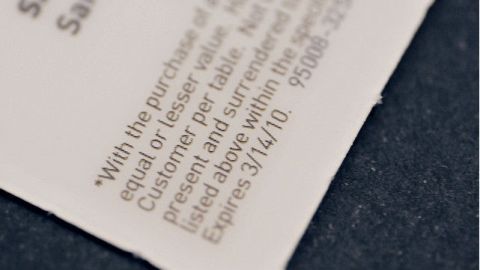How Many Forms Does It Take To Put a Kid on a Bus to Camp?

How many forms does it take to put a kid on a bus to summer camp?
I’m a fan of civil juries as informal vehicles for wealth redistribution and justice, so I’m not one to jump on the “First, Kill all the Lawyers” bandwagon. But each and every day, they manage to diminish the quality of my life in some small or momentous way.
On a good day, the ghost of the litigation lawyer wastes only a few minutes of my time. Indirectly, they make me fiddle with safety-conscious packaging after someone, somewhere, long ago, choked because they thought that a plastic bag was a toy (“Warning! This is Not A Toy!”).
For similar reasons, we now have warning labels such as: “Do Not Eat Toner,” “Caution: Do Not Close Your Eyes While Driving,” “Remove Child Before Folding [on a portable stroller]” and, on a propane torch, “Never Use While Sleeping.”
On a bad day, litigation lawyers might consume hours for me to process red tape designed to prevent someone from being sued because I’m a fool.
What paper barricades and bulwarks, built entirely out of fine print and belabored overstatement, do we believe will protect our children from tragedy? What sea of disclosure forms and waivers, floating in the moat around our lives, secures us? What paper tigers hold danger in abeyance?
In other words: Why do I have to fill out yet another, goddamned form before my middle-school child can board a vehicle, a mundane action that he’s performed independently now for many years, without incident, and go make a lanyard at a day camp somewhere?
I totally understand the Emergency Contact forms, and the “Does Your Child Take one of these 100 Big Pharma Medications?” questionnaire.
After that, they lose me. I sign “permission” forms to allow counselors to apply sunscreen. I disclaim any responsibility for anything whatsoever that might happen anywhere, in any fashion, at this camp, whether from a hornet or the hockey-masked killer Jason. I fill out health forms that no 16-year old counselor anywhere would wade through or deign to read.
This summer I completed a fine, over-wrought specimen of the genre. It was a “Permission to Transport Children, 2013” form. This one is memorable for its tortured, paranoid precision. It gives the impression of having been written by a raving, Type-A maniac. The form includes “General Guidelines” for the Safe Transport of Children. I must acknowledge that I have “heard and understood” the form, as they say in the military. The first 12 guidelines include that drivers must obey driving regulations, and that “all drivers and/or adult passengers will review basic safety procedures with all passengers before starting a trip.”
Yeah, right. I’ve been “transporting” children my entire parental life and never once reviewed safety procedures. I have reviewed the “Don’t Leave Crumbs in the Back Seat, Please,” and “would you stop kicking my seat” procedures, but they haven’t worked too well.
“The vehicle is to be driven defensively with more than ordinary courtesy given to other drivers.” Also, the driver will “perform a visual safety check” before each trip, and the vehicle must have a “first aid kit.” Good grief.
A few days after signing off on the General Guidelines for how to have my child sit in a car, the said child and I were in the car together. I’m sorry to report that my car does not have a first aid kit, nor did I perform the required “visual safety check” on it before we embarked on our scary journey to the pizza joint.
“Why are children walking practically out into the street, in the middle of the street, when there’s a green light?” I asked rhetorically, alarmed at the terrible street-crossing habits of the young. My son gave me a wonderfully suggestive answer: “Because we’re too aware of safety.”
At first it sounded like a contradiction. But he meant that safety concerns are so omnipresent, that kids have come to expect that some grown-up, some adult, some form, somewhere, designed by an adult, is managing that world of safety for them.
The invisible hand will pull them out of the street, away from the campfire, and in to the shelter. No action they take can be dangerous, because if it were dangerous, then someone would have prevented it.
The more we dwell on safety products, technology, and warning labels, the less safety feels like a child’s business, and they less they learn it or take ownership of it.
Safety is an intuition. You develop it through observation, acuity, and a confidence to trust your own instincts when things don’t seem right. It comes from solid self-rescue and “refusal skills,” a good if jargon-y phrase. When you don’t want to talk to someone, or return a creepy email, you don’t. You know when to cross the street, or stay away.
The more the project of safety gets seized by the litigation-wary, with the litigation lawyer at the helm, the less it supports the safety skills that our children really need.
I guess the real danger is that all the forms, warning labels, disclaimers, and waivers will create an illusion of protection, when most often, we have only our instincts, skills, and the goodwill, sanity, civil manners, and decency of other humans to keep us whole.





